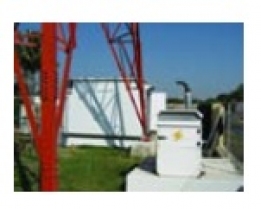Case for Sharing - Operator perspective

-
The phenomenal mobile subscriber growth in the country has led to a similar growth in the Indian infrastructure space.The number of towers has doubled in the past year with existing and new operators aggressively expanding their networks.Besides, spectrum constraints, new technologies, low ARPUs, capex and opex savings have all worked towards pushing infrastructure growth in the country.
Key drivers for infrastructure sharing
Denser coverage needs, the exponential increase in traffic, limited spectrum availability, and faster time-to-market are driving the need for infrastructure sharing.Sharing also addresses operator issues like the need for huge capex and clearances, landlord and neighbour issues, rising power costs and site rentals, and tower design restrictions, leading to lower costs.The reduction in operational cost can then be passed on to users. Besides, infrastructure sharing also offers additional revenue opportunities for operators as they can defer capex by using an opex model.
Challenges and issues
With ARPUs dropping month on month, operators need to find new opportunities to control costs. Lack of site availability in urban areas also poses a challenge, especially in light of the growing number of players. Getting the right site for deployment is important as it can impact the design and quality of networks. Besides, the introduction of new techniques like MIMO and sector splitting can increase loading and therefore impact network optimisation as tenancy increases.Another major challenge is controlling power costs and inadequate power supply. Some circles have power cuts of 10 hours or more per day. Uttar Pradesh (East) has 17 hours of power cuts. Power sector infrastructure has not kept pace with the growth in the telecom sector. Meanwhile, alternative energy sources have a longer payback period and are not a viable solution. And with power being categorised as a commercial service, power costs are higher.
Managing operators having different frequencies of operation is another major challenge. This will get further complicated with the introduction of 3G and broadband wireless access services.
There is a need for a focused risk management approach. While signing a firm, long-term contract, it is important to take into account likely future trends and ensure the organisation is flexible enough to survive and address adverse changes. Some of the other aspects to consider are the diversification of the customer base, the diversification of revenue streams, and credit risk insurance.
Status and advantage of infrastructure sharing
Some of the advantages of infrastructure sharing are:
Government policies have also encouraged infrastructure sharing. Universal Service Obligation Fund subsidy is available for setting up rural infrastructure.This will enable operators to reach rural markets and bridge the digital divide.
With operators expanding their networks, the tenancy rates are constantly growing. Tenancy is expected to go as high as 2.8 for some operators, according to IIFL Research.
Emerging scenario
Active RAN sharing is an emerging opportunity for operators. It enables faster rollout with optimal resource (power, space) usage. It also allows savings in network-related costs.
Operators are exploring intra-circle roaming arrangements with other operators, which is an attractive option for new operators. Network co-building in combination with intra-circle roaming is also a possibility for new operators. Besides, smart antenna and tower design can improve the city skyline. Operators are continuing to explore sharing in rural areas where tenancy is still low. With low ARPUs and fewer subscribers, sharing will be a key to win this market.
Inter-technology base transceiver stations like the Software Defined Radio will emerge in the coming years, enabling operators to deploy cost-effective solutions. For areas with power issues, alternative energy sources are likely to emerge as a financially viable option for remote sites with high tenancy as more operators expand into the rural areas.
Tata Teleservices' view
The company has always strived to offer affordable services to customers and it appreciates the steps taken by DoT in encouraging infrastructure sharing. As it aggressively launches its GSM network across India this year, it is hoping to share sites with all operators and IP providers.
Currently, TTSL has the highest sharing of sites with tower companies. It believes that sharing of infrastructure with other operators and tower companies will not only utilise resources more efficiently, but will also help provide cost-effective service to customers.
Anil Kumar Sardana, Managing Director, Tata Teleservices
- Most Viewed
- Most Rated
- Most Shared
- Related Articles
- Manufacturing Hub: India emerges as a ke...
- TRAI performance indicator report for Se...
- Prashant Singhal, partner, telecom indus...
- 2G spectrum scam: continuing controversy
- An Eventful Year: Telecom highlights of ...
- Telecom Round Table: TRAI’s spectrum p...
- Manufacturing Hub: TRAI recommends indig...
- Linking Up: ITIL to merge with Ascend
- High Speed VAS - Killer applications w...
- Bharti Airtel seals deal with Zain - Zai...






